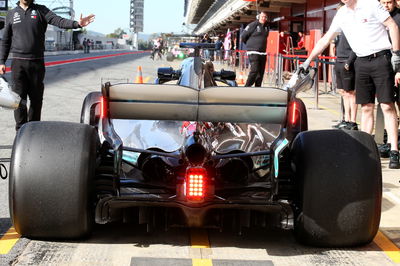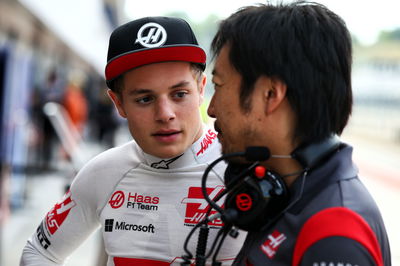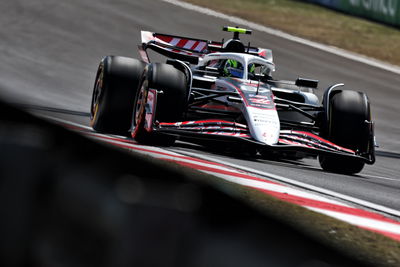F1 cars to use rear endplate rain lights from 2019
The FIA has confirmed that all Formula 1 cars will be fitted with rain lights on their rear-wing endplates from the 2019 season as part of a new safety move for the sport.
Rear endplate lights are used in other series such as the FIA World Endurance Championship to allow cars to be more visible in poor weather conditions, but the first F1 test of them did not take place until testing in Barcelona earlier this year.

The FIA has confirmed that all Formula 1 cars will be fitted with rain lights on their rear-wing endplates from the 2019 season as part of a new safety move for the sport.
Rear endplate lights are used in other series such as the FIA World Endurance Championship to allow cars to be more visible in poor weather conditions, but the first F1 test of them did not take place until testing in Barcelona earlier this year.
Mercedes tested the rear endplate lights on its W09 car during running following the Spanish Grand Prix, acting as a first step towards their introduction for 2019.
Following the latest meeting of the World Motor Sport Council in Paris on Friday, it was confirmed the rear endplate lights will now be mandatory on safety grounds from the start of the 2019 F1 season.
Other changes to the technical regulations for next season include:
- Changes to the mirror regulations and also associated rear wing changes (height) for rear view visibility and safety (Articles 3.6 and 14.3).
- The on-board camera regulations will be modified to improve the TV spectacle (Article 21).
- Minor modifications to the halo fairing (Article 15.2.6) are to be made for safety reasons during a potential driver extraction.
The WMSC also confirmed some minor tweaks to the sporting regulations for 2019:
- Changes to the Safety Car regulations to ensure there is a consistent point at which drivers may overtake when the Safety Car returns to the pits. This will now be the same in all three types of restart.
- The teams will now be responsible for initial scrutineering of their cars. Before the cars go on track for the first time, teams must declare conformity with all safety related matters.
- The official end-of-race signal will now be a chequered light panel, although the chequered flag will still be shown.
- For 2020, the team personnel curfew – the amount of time for which all team personnel must be away from the track – will increase from eight to nine hours.
Finally, the WMSC also confirmed that it was presented with a report on security measures planned for next year’s Brazilian Grand Prix following meetings between the FIA, F1 and the local authorities











